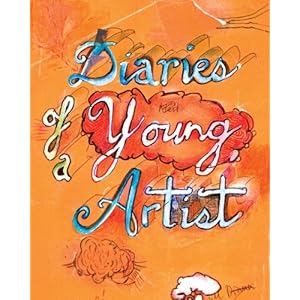Hal Foster, in his chapter “The Crux of Minimalism” in The Return of the Real, positions Minimalism as both the crowning apogee of Modernism and also the break from it. According to Foster, Minimalism completes Modernism only to exceed it. He writes:
“We arrive, then, at this equation: minimalism breaks with late modernism through a partial reprise of the historical avant-garde, specifically its disruption of the formal categories of institutional art. To understand minimalism – that is, to understand its significance for advanced art since its time – both parts of this equation must be grasped at once.” (Foster, Return of the Real, p54)
Foster recognizes some of the complexities and contradictions in Minimalism (particularly the extent to which Minimalism claims both phenomenological and epistemological traits). He also warns of anachronistic interpretations. Nonetheless, he draws on a series of binary oppositions to show how Minimamalism is a break from the Modernist ideals championed by Clement Greenberg.
I found myself analyzing Foster's text in terms of these binary oppositions. I wrote down all the pairings I could find. Looking at the list, I thought others might find it useful:
| Greenbergian Modernism | Minimalism |
| “Expansive” and “vanguard” (Greenberg) | “Reductive” and “retardaire” (Greenberg) |
| Participated in cultural regressions of Reagan-Bush era | Opened up a new field of art |
| Apparent freedoms | Apparent restrictions |
| Transcendental space of modernism | Immanence of Dada readymade or constructivist relief |
| Anthropomorphic images and gestures | Presence of objects |
| Siteless realm, standing apart on a pedestal or as pure art | Repositioned among objects and redefined in terms of place |
| Safe, sovereign space of formal art | The here and now |
| Surface | Site |
| Topographical mapping of the properties of a medium | Perceptual consequences of a particular intervention |
| Essential qualities of art | “Extraneous effects” (Greenberg) |
| An ideological model of meaning and of consciousness | Called “reductive” and “idealist” but complicates the purity of conception with the contingency of perception |
| Formal essence and categorical being | Perceptual conditions and conventional limits of art |
| Private meaning and subject | Public meaning and subject |
| Mental space of idealism conception | Physical interface with actual world |
| Strictly spatial, entirely present, grasped in a single glance, a transcendental moment of grace | Concern with time and reception, and the temporality of perception. |
| Illusionist | Literal readings |
| Objects set in relation to one another | Nonhierarchical ordering of objects to “take relationships out of the work and make them a function of space, light and the viewer’s field of vision” (Morris) |
| Structural linguistics | Phenomenology (but with a structural underpinning) |
| I express | I perceive |
| Categorical imperatives, historicist tendencies | “linear history has unraveled somewhat” (Judd) |
| Objective painting | Not painting, but a creation of objects |
| Quality – judged by reference to the canon of Old Masters and great Moderns | Interest - provoked by testing aesthetic categories and transgressing set forms |
| Normative criticism and aesthetic refinement | Epistemelogical disruption, aesthetic play |
| Artist as existential creator and formal critic, with access to transcendental sublime | Death or the author, birth of the viewer |
| Aims to defeat or suspend objecthood | Aims to discover objecthood as such |
| Discover the essence | Transgress the limits (there is no way you can frame it) |
| Formal autonomy | You just have to experience it |
| Sublime “instantaneousness” “which at every moment is wholly manifest”, individual “grace” (Fried) | “theatrical”, “as it happens it merely is” , “the negation of art”, only literalism (Fried) |
| An act of faith and devotion that compess conviction (Fried) | Avant-gardist atheism (Fried) |
| Autonomy, belief, conviction, a secret substitute for religion (Fried) | Saps, disrupts, corrupts autonomy, belief, conviction (Fried) |
| Self critical objectivity | Specific objects |
| Modernist autonomy based in formalism and disciplines | Literalism, gestalt, perception, situation |
| Old | New |
| Purify art of life | Sublate art into life |
| Preserve | Transform |
| Posits aesthetic norms and normative examination | Posits functional analysis: investigation of the social and institutional |
| Normative | Experimental |
| Refinement | Redefinition |
| Secure a transcendental conviction in art | Undertake immanent testing of discursive rules and institutional regulations |
| Seek the essential | Reveal the conditional |
| Compel conviction | Cast doubt |




